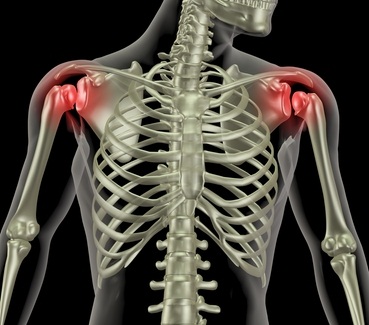 The shoulder is the most commonly dislocated joint in the body, with approximately 2 percent of Americans suffering from a dislocated shoulder at some time in their life.
The shoulder is the most commonly dislocated joint in the body, with approximately 2 percent of Americans suffering from a dislocated shoulder at some time in their life.
An interesting study performed at the Orthopedic Biomechanical Laboratory in Long Beach, California, run by Dr. Patrick McMahon and colleagues, looked at the amount of force that was needed to produce a dislocated shoulder. This study was published in the August 2013 issue of the Journal of Shoulder and Elbow Surgery. Follow along to learn more about the research findings.
A dislocated shoulder occurs when the upper arm bone, or the humerus, is dislocated from the glenoid, the cup of the shoulder joint. There are several different ways the shoulder may dislocate:
- Out the front of the shoulder (anteriorly)
- From the back of the shoulder (posteriorly)
- Under the shoulder joint (inferiorly)
There are approximately 5.6 million people between ages 18-70 that have had a shoulder dislocation. The most common cause or etiology of a shoulder dislocation is the result of a traumatic event. The most common direction the dislocation occurs is anteriorly, out the front, of the shoulder.
Traumatic dislocations will recur 10 to 90% of the time. Risk factors for re-dislocation include:
- Number of prior dislocations
- Age of the patient
- A person’s gender
- Physical activity level
Researchers led by Dr. Patrick McMahon wanted to determine if the force necessary to cause a shoulder dislocation was reduced with an increasing number of dislocations. A cadaveric model was created to conduct the research. They also considered if the capsulolabral pathology affected the amount of force needed to cause subsequent dislocations.
Based on their results, these researchers proved that when a person experiences an increasing number of shoulder dislocations, less force is needed to dislocate the shoulder. The researchers also found that the type of capsular injury also contributed the amount of force that was needed to cause the dislocation to occur.
If the capsule was stretched without a labral tear there was less force needed to cause subsequent dislocations. This information can be helpful in determining what patients may have a dislocated shoulder in the future.

Leave a Reply
You must be logged in to post a comment.